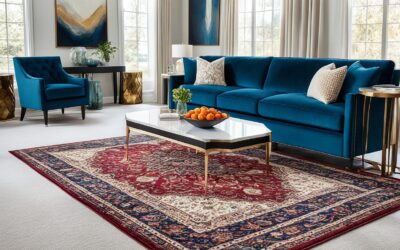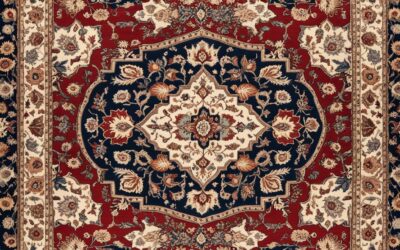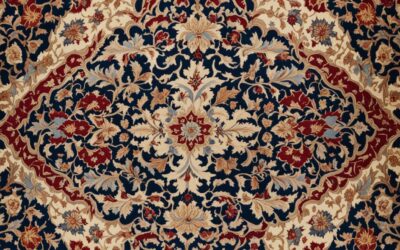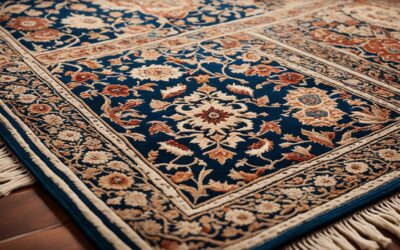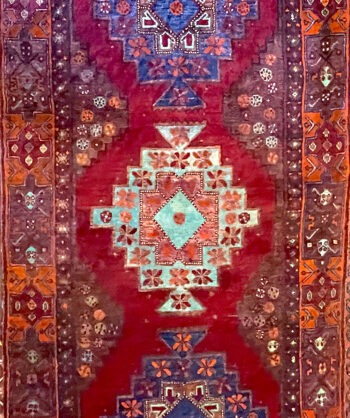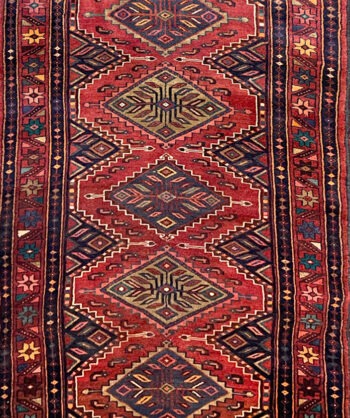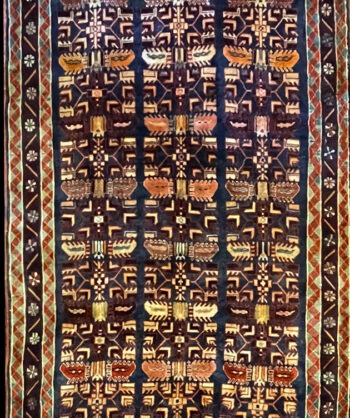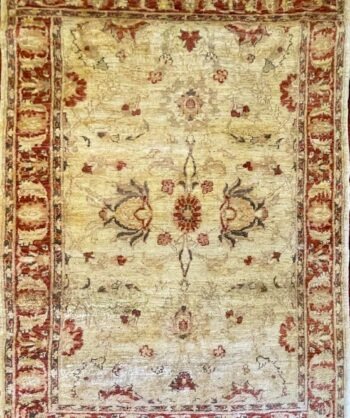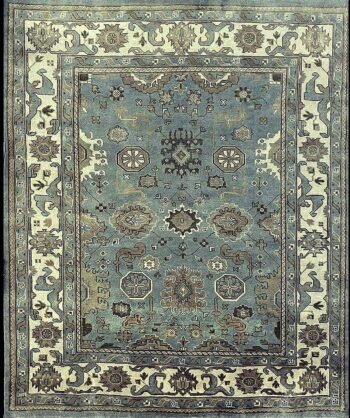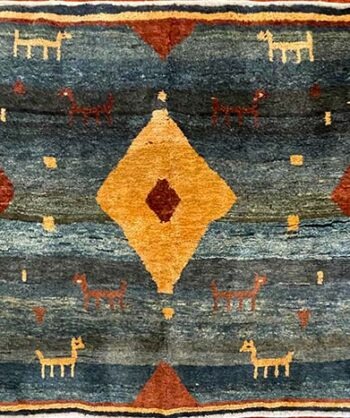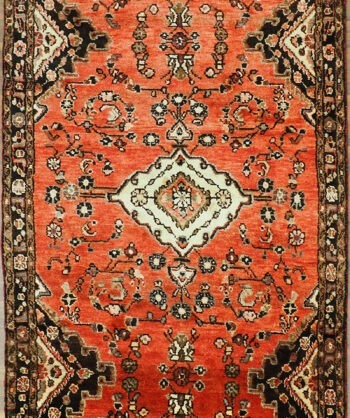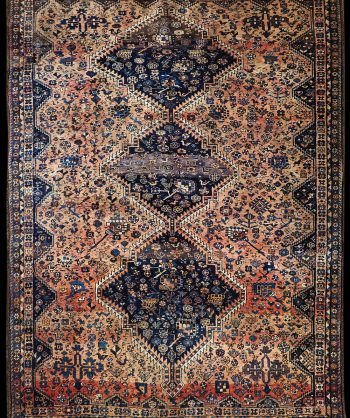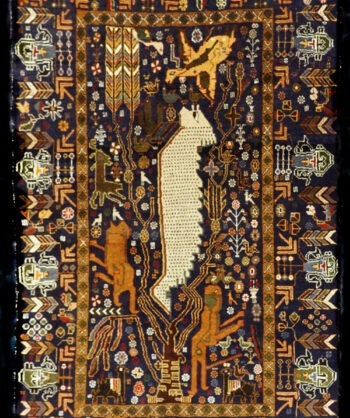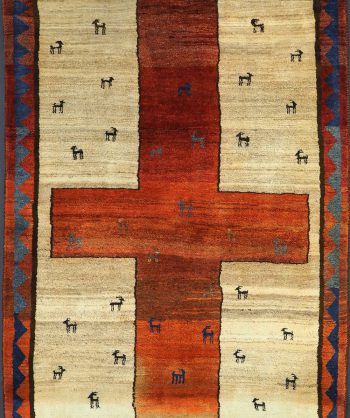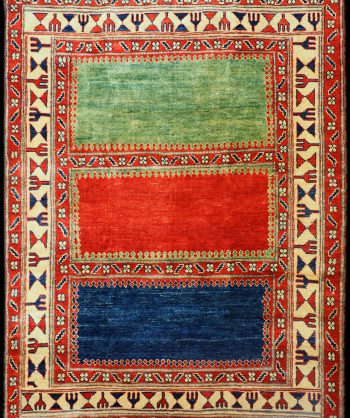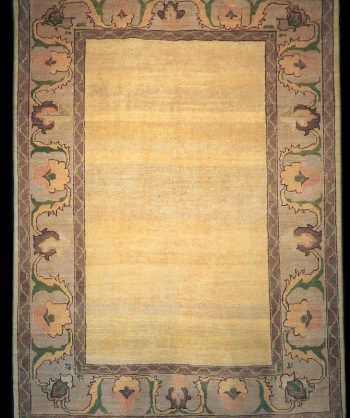Table of Contents
Persian rugs have a history that goes back many centuries. They are famous for their detailed patterns and bright colors. These show the skill and art of the people who make these traditional Iranian rugs. This guide looks at everything from how they’re made to what they mean in Persian culture. It also talks about the impact of different rulers and empires over the years.
Key Takeaways:
- The history of Persian rugs dates back centuries, displaying the country’s artistic and cultural legacy.
- Traditional Iranian rug makers are renowned for their intricate designs and vibrant color schemes.
- Persian rugs hold great significance in Persian society, often symbolizing wealth, status, and hospitality.
- Various empires and dynasties influenced the development and evolution of Persian rug designs.
- The Safavid Dynasty, Ottoman Empire, and Mughal Empire played significant roles in shaping the Persian rug tradition.
Ancient Weaving Techniques and Materials
The making of Persian rugs goes way back. The methods Persian weavers used show their high level of skill and commitment. To really understand the beauty of these rugs, let’s talk about the materials and techniques they used.
For these rugs, weavers mostly used wool and silk. This made the rugs strong and look very luxurious. They also used natural dyes from plants and minerals. These dyes made the rugs look even more beautiful.
But what really makes Persian rugs special is how they are made. Weaving skills have been passed on through families for years. This keeps the true spirit and tradition of making these rugs alive.
Each Persian rug is special. This is because weavers each put their own creative design and techniques into them.
They usually use a method called “warp and weft.” This means they tightly put threads up and down on a loom. Then, they weave threads through them. This makes the rug strong and shows off the design.
Another important method is knotting. Weavers tie knots one by one to make patterns. The more knots there are, the better the rug’s quality and design.
Persian weavers were very creative. They tried many styles and patterns. Some rugs have patterns that look like shapes. Others show flowers or plants. But every rug is special and shows the weaver’s imagination and skill.
“The art of creating Persian rugs is a harmonious blend of ancient weaving techniques and carefully chosen natural materials, resulting in exquisite masterpieces that showcase the rich craftsmanship of Persian rug makers.” – Truckee Mountain Rug
All these special weaving methods made each Persian rug a piece of art. Not only are they beautiful, but they are also very important to Persian culture.
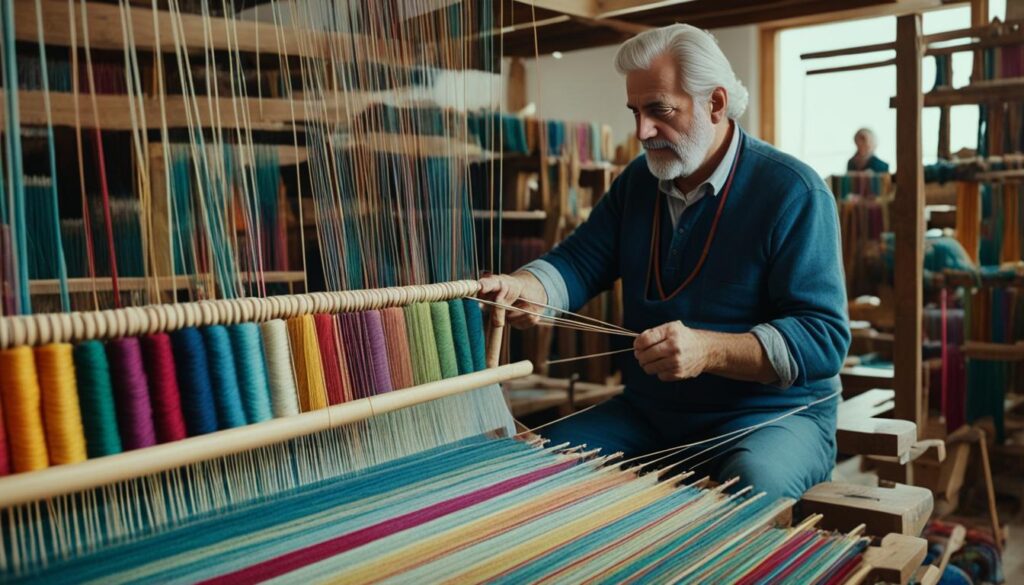
| Materials | Weaving Techniques |
|---|---|
| Wool | Warp and Weft |
| Silk | Knotting Technique |
| Natural Dyes | |
| Plant Stalks | |
| Bamboo |
Significance of Rugs in Ancient Persian Society and Culture
In ancient Persian society, Persian rugs were very important. They showed people’s wealth and social status. These rugs were more than just items for the floor. They symbolized luxury, prestige, and even diplomacy.
These rugs, known for their beauty and quality, were favored by the elite. Their complex designs reflected the weaving skills and art taste of the Persian people.
Rugs also played a role in diplomacy. They were often given as gifts among rulers and dignitaries. This was a way to show cultural strength and to form alliances. The detailed designs and careful manufacturing represented Persian historical and artistic heritage.
Various influences have shaped Persian rug designs over time. The Safavid Dynasty and the Ottoman Empire contributed to these changes. Each influence added new layers to the rugs, making them more diverse and complex.
An authentic Persian rug is a piece of Persian culture and tradition. Each rug is made with great care by hand. The weavers put their skill and creativity into every rug, making it a unique work of art.
Through understanding the place of Persian rugs in ancient Persian society, we see their deep value. They are more than just textiles; they are symbols of art, culture, and tradition.
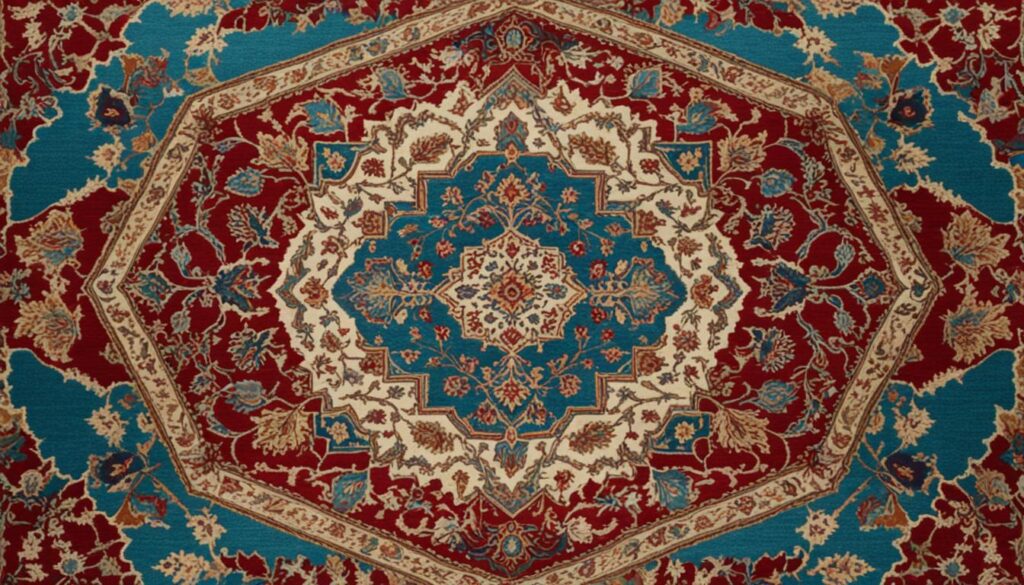
The Evolution of Persian Rug Patterns
Persian rug patterns have changed over time. They show the influences of various eras and regions. From tribal rugs with geometric patterns to city rugs with elaborate flowers, each design has its own story.
The “Herati” pattern is famous in Persian rugs. It has a diamond-shaped medallion at the center, with fish and flowers around it. This pattern stands for life, growth, and prosperity.
The “Garden of Paradise” design is also well loved. It shows a lot of plants and animals in a rich, balanced way. This pattern means paradise, fertility, and spiritual growth.
These are just a couple of the many Persian rug patterns. They have been used for centuries, telling the story of Persian culture and art.
The Legacy of Authentic Persian Rug Craftsmanship
The making of Persian rugs shows the skills of many weavers over time. This tradition has been handed down from generation to generation. Today, it’s a prized craft.
The process of making a Persian rug is long and detailed. Weavers knot the wool or silk by hand onto a base to create the patterns. It can take a long time to finish, needing a lot of care and attention.
Making a Persian rug is about more than just weaving. It’s a deep part of tradition, culture, and art. Each rug is a masterpiece of quality and beauty. It shows the high standards of Persian craftsmanship.
Persian rugs are still very popular today. They are seen as very special, often kept as family heirlooms. They continue to show the lasting legacy of Persian rug crafting for many years.
Early Influences: From Persia to the World
Many cultures have influenced the making of Persian rugs since ancient times. Today, these rugs are known and loved globally.
The Achaemenid Empire was key in starting Persian rug weaving. This period was vital, setting the stage for the beautiful designs and techniques we see today.
Persia shared and received ideas through the famous Silk Road. This network brought together many different styles, including Central Asian boldness and Chinese finesse.
These connections can be seen in the details of Antique Persian Carpets. For example, you notice intricate patterns and special colors in each rug.
The Influence of the Silk Road
The Silk Road was a key path for Persian rugs to travel and become known. It led these fine creations into royals’ and nobles’ homes around the world.
Today, these rugs still grace many elegant places. They are valued for their beauty and the skill of their weavers.
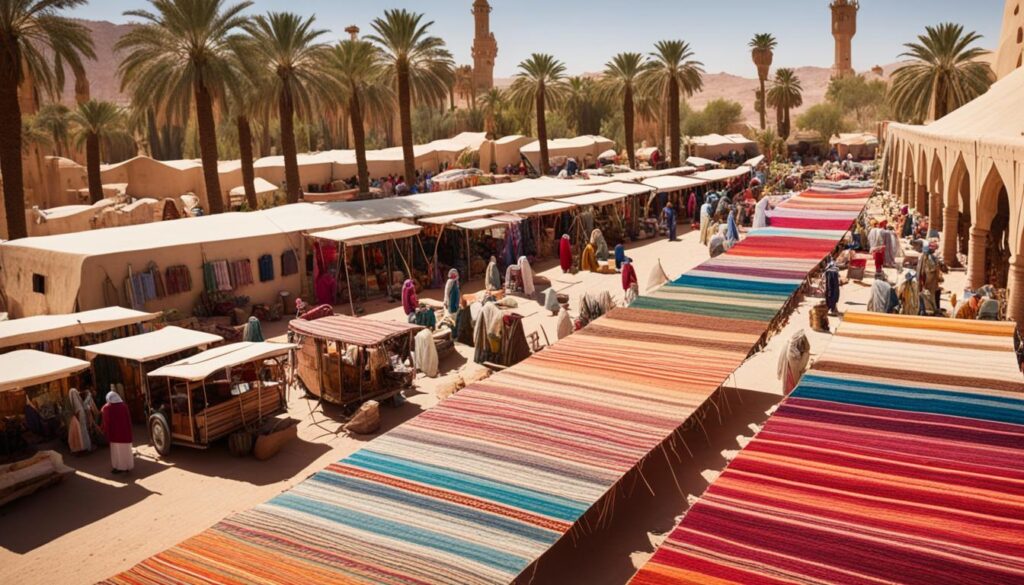
“The fusion of artistic influences along the Silk Road resulted in the birth of exquisite Persian rug designs that continue to captivate collectors and enthusiasts today.”
As demand grew, different regions developed unique styles. Each rug tells a story of its own place’s culture and beauty.
These rugs are still treasured worldwide, from rich home floors to notable auctions. Their appeal shows the lasting power of Persian rug artwork.
The Glorious Safavid Dynasty: Masters of the Loom
The Safavid Dynasty in Persia was key in developing Persian rugs. They left a strong impact on the art form. From the 16th to 18th century, this became a thriving time for rug-making. Rulers like Shah Abbas I supported rug craftsmen, boosting their skills and fostering creativity.
Kerman and Kashan were central in producing rugs under the Safavids. Weavers and dyers in these cities were experts in traditional methods. They made rugs that reflected Persia’s rich culture. These rugs were seen as items of luxury and beauty.
The Ardabil Carpet, made in the 16th century, stands as a key Safavid work. It shows the high level of skill and artistry of that time. Now in the Victoria and Albert Museum, this carpet is a symbol of Safavid craftsmanship and creativity.
The Sheikh Safi Carpet, made in the 16th century, is also famed for its design and quality. It showcases intricate floral patterns with vibrant colors. This work is a prime example of Safavid rug-making.
Under the Safavids, Persian rugs became prized as luxury items. Their superb artistry and quality drew attention from world collectors and royalty. These rugs established the bar for traditional Iranian rugs, which are still treasured today.
Ottoman Opulence: Turkish Rug Heritage
The Ottoman Empire greatly influenced the making of rugs. It merged Persian designs with Turkish elements. This mix led to the creation of Turkish rugs known for their beauty and the Empire’s rich cultural history.
The design of Ottoman rugs combined Persian intricacy with Turkish creativity. This combination birthed rugs with stunning patterns and vivid colors.
Turkish rug designs are famous for their use of bold colors like red and blue. These vibrant hues make the patterns stand out. The result is a beautiful, eye-catching piece of art.
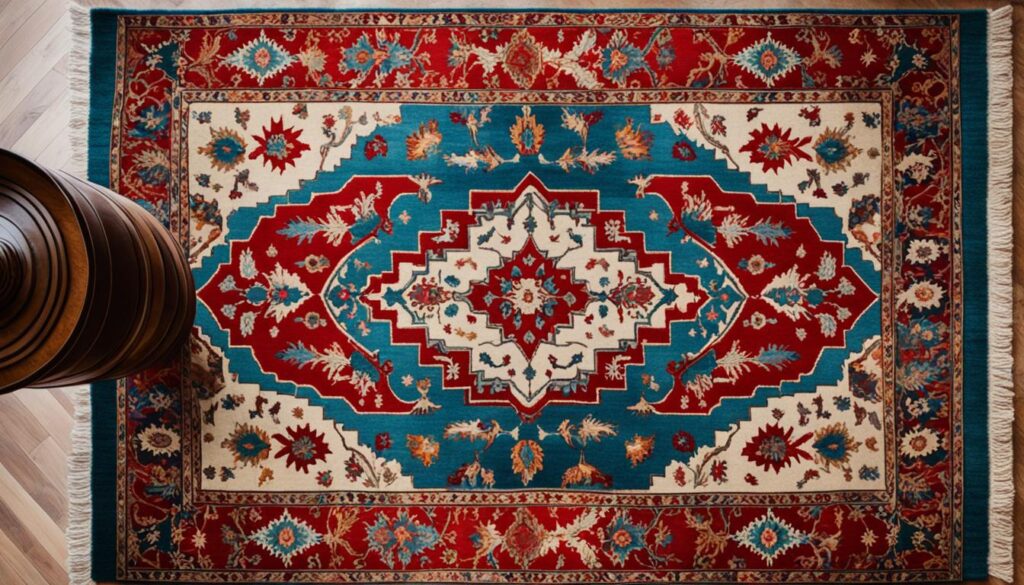
The patterns on these rugs tell stories with their symbols. You’ll often find floral and geometric designs, along with Turkish cultural symbols. This diversity adds layers of meaning to the rugs.
Turkish weavers use top-quality materials like wool and silk. Their mastery of knotting, learned over the centuries, ensures durability. This effort makes each rug more than just a decoration; it’s a lasting piece of history.
The Timeless Beauty of Traditional Iranian Rugs
Iranian rugs, or Persian rugs, are loved for their craft and beauty. They come in many designs, each one telling a story. They’re a big part of Persian history and art.
These rugs often have floral, geometric, or story-filled designs. Each design has a special meaning and shows Persia’s artistic history.
Persian rugs are more than décor; they’re handcrafted with great care. From their vivid colors to the detailed knots, they’re an art form. They are cherished by those who love rugs around the globe.
| Feature | Turkish Rugs | Persian Rugs |
|---|---|---|
| Designs | Distinct fusion of Persian and Turkish influences | Intricate floral motifs and geometric patterns |
| Color Palette | Bold and vibrant | Varied, often including rich reds and blues |
| Materials | High-quality wool and silk | High-quality wool and silk |
| Craftsmanship | Exquisite knotting techniques passed down through generations | Meticulous weaving techniques |
Mughal Magnificence: Indian Rug Renaissance
During the Mughal Empire’s reign, rug-making in India saw a golden era. Indian craftsmen blended Persian styles with local ones. This fusion brought a new level of beauty to rugs in India.
Agra and Jaipur were at the heart of this renaissance. Skilled weavers in these cities wove rugs with detailed flower patterns. These rugs carried the grandeur of the Mughal Empire, mixing Persian and Indian art.
The Mughal era was critical for Persian rug history. The empire’s support led to a mix of Persian designs with Indian influences. This led to the creation of truly exceptional rugs.
Even today, Iranian rugs are cherished worldwide for their beauty. The influence from the Mughal Empire’s time in India is still deeply felt. It shows the lasting power of Persian rug influence and its effect on the world.
FAQ
What is the history of Persian rugs?
Persian rugs have a long and captivating history, spanning centuries. They showcase the artistry and craftsmanship of traditional Iranian rug makers.
How were Persian rugs made in ancient times?
The methods of creating early Persian rugs are still not fully known. However, ancient Persian weavers showed remarkable skill. They used materials like bamboo, plant stalks, and wool to make beautiful patterns and designs.
What is the significance of Persian rugs in ancient Persian society?
In ancient Persian society, Persian rugs were very important. They showed wealth, luxury, and were used in diplomacy as gifts. The making of these rugs demonstrated weaving skills and Persian aesthetic taste.
Where do Persian rugs originate?
Persian rugs’ origins go back to the Achaemenid Empire. This period marked the beginning of their rich history. Rugs from this time show influences from China, Central Asia, and from the Silk Road.
What influence did the Safavid Dynasty have on Persian rug-making?
The Safavid Dynasty boosted Persian rug-making to a golden age. Rulers like Shah Abbas I supported the craft. Cities like Kerman and Kashan flourished. Safavid craftsmen’s work became known for its artistry and innovation.
How were Turkish rugs influenced by Persian rug-making?
The Ottoman Empire influenced rug-making greatly. Cities like Usak and Bergama stood out for their unique designs. Ottoman rugs merged Persian and Turkish styles, showing the empire’s artistic and cultural heritage.
How did Indian rug-making blend Persian influences with local aesthetics?
Under the Mughals, Indian rug-making reached new heights. Persian influences combined with local touches in cities like Agra and Jaipur. These places became famous for their rugs, featuring detailed floral patterns and motifs.


